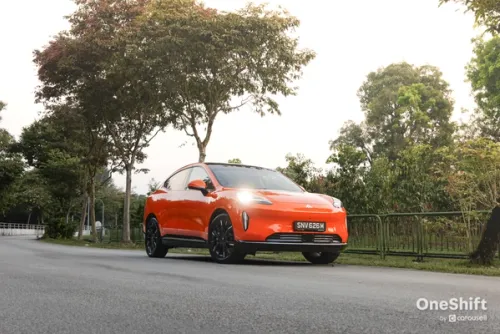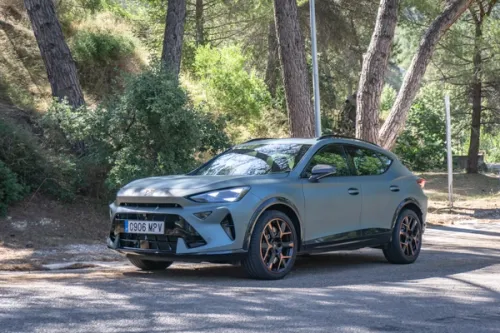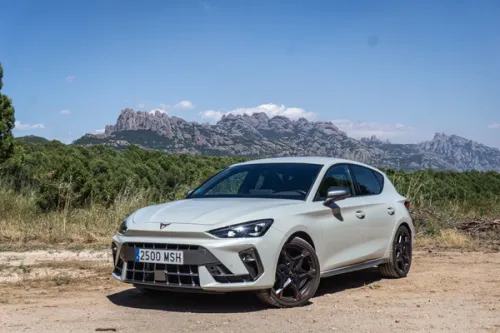Honda Civic Hybrid Review: Honda's mass-market Hybrid
Honda has learnt valuable lessons from its first Civic Hybrid, and has made the new model much more efficient and practical


While most other car markers are still experimenting with alternate eco-friendly power units such as the petrol/electric hybrid, Honda is onto its second generation Civic Hybrid, the third hybrid model that it is selling here in Singapore.
The thing about cutting-edge technology like the complex petrol/electric hybrid is that experience counts, and it is a case of continual tweaking and modification until this new power unit works effectively and in a cost-efficient manner.
This is particularly so with Honda, and even though this Japanese carmaker probably makes some of the finest 4-cylinder engines in the world, it continues to upgrade and improve its technology.
For the Civic Hybrid, the improvement that most “green” drivers will notice is the air conditioning doesn’t shut off any more, even when the engine does when the car is not moving. Both Honda and Toyota have identified that cutting the engine off while the car is not moving is one of the most effective ways of trimming a car’s fuel consumption – after all, if the car is not moving, it shouldn’t be using up any fuel.
In the first generation Civic Hybrid, if one wanted to be really parsimonious and use as little fuel as possible, one would switch the air-conditioning to “eco” mode. In most instances, it would function normally, but when one came to a stop, the air-conditioning would shut off with the engine. Both the engine and aircon would spring back to life the moment the right foot was lifted off the brake peddle.
This no longer happens on the new Civic Hybrid as its new dual-scroll air-conditioning compressor takes its power from either or both the petrol engine or electric motor. But this new compressor is just one improvement to the Civic Hybrid – the engine itself has become more fuel efficient and is significantly different from first generation model.
The power plant at the heart of the Civic Hybrid continues to be the 1.3-litre i-DSI engine that is found in the Honda Jazz. For the new Civic Hybrid, Honda has added a 3-stage i-VTEC valvetrain. As with Honda’s other i-VTEC engines, the a sophisticated software manages the timing of the opening and closing of the valves depending on the speed and demands of the engines. In addition to low and high modes of valve control, the 3-stage i-VTEC has a third mode – de-activated valve control. This third mode is the most fascinating of them all – when the engine’s ICU decides that it is okay to do so, both the inlet and outlet valves close, preventing any fuel from being burnt. In effect, this means the engine automatically shuts of its cylinders one by one if its load is reduced, thus saving more fuel, and further cutting down fuel consumption.
The Honda philosophy for its petrol/electric hybrid is quite different from that of Toyotas. In a Honda, the engine is always running, but this engine has been engineered to be as fuel-efficient as possible. On a Toyota Pruis, on the other hand, the engine is off at when the car is at a standstill and at low speeds, but cuts in when more speed and power are required. Once the Prius is traveling above 45km/h, its engine will remain on to assist the electric motor and battery.
On the latest Civic Hybrid however, although the engine is always running, there will be times when it is not using any fuel as the i-VTEC engine enters into its third stage and closes up all the valves. The thing is, the power unit does this so seamlessly, that one hardly notices that its happening at all, which is all the more impressive.
In fact, it is this seamlessness and “painlessness” of going green that the Civic Hybrid is all about. Everyone knows that Honda’s have been engineered to be driver’s cars, and are particularly satisfying to drive. This Honda “magic” continues in the Civic Hybrid – it feels so normal, and fun-yo-drive, it almost makes one forget that one is saving fuel along the way. The steering feedback is nicely communicative, and the car seems to enjoy being driven. From the driving seat, the only indication that one is in a Hybrid vehicle is that the car has a few extra lights and gauges.
The new Civics futuristic bi-level Multiplex instrument display gets an IMA (Integrated Motor Assist) assist level and IMA charge level bank of lights to the left of the tachometer – this place is blank on the normal Civics, so this means the Hybrid version of the Civic was an integral part of the car’s development. On the upper digital speedometer, the water temperature gauge can be toggled to give the current fuel consumption reading, something that the other Civics don’t display. Apart from these two displays, there is nothing else that gives away that you’re behind the wheel of an eco-friendly “green” car, which is great.
I found that it is only through reading the fuel consumption gauge that I could tell when the i-VTEC engine entered its 3rd stage and was using no fuel at all. It happens when the car is cruising on the highway, and when the road is level or on a gentle downward slope – the consumption reading goes to zero, and the car is running without using any fuel. It’s a magical feeling, to be in motion but not burning any fossil fuel. The moment there is the slightest demand on the engine, the fuel consumption starts to flow, but it is a seamless and effortless transition.
What allows this to happen is of course ensuring that the car is as aerodynamic as possible, and the Civic Hybrid’s drag is lower than that of the normal model. To cut drag, the Hybrid gets a full undercarriage covering, an additional tail spoiler and a flatter shaped light alloy wheel rims, and that’s all – everything else is “normal”.
The other thing about the Civic Hybrid is that it has proven itself on local roads – Honda, through its DIRACC car sharing scheme, has been running over 60 Civic Hybrids in Singapore for the last four years and the cars have proven to be absolutely reliable.
So, if you were one of those that feared that a “green” future would mean boring and anodyne cars that were no fun to drive, the Civic Hybrid is evidence that a car can be environment-friendly and fun-to-drive as well.
Credits: Justin Lee








Get the Best Price for your used car
from 500+ dealers in 24 hours

- Convenient and Hassle-Free
- Consumer Protection
Transparent Process
With No Obligation








